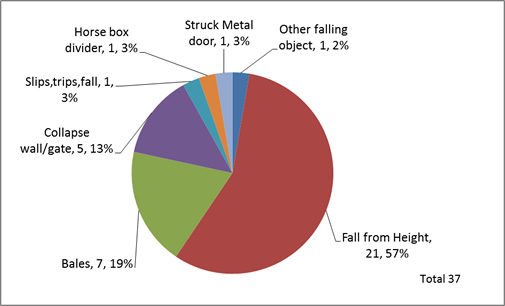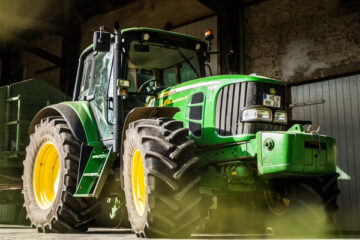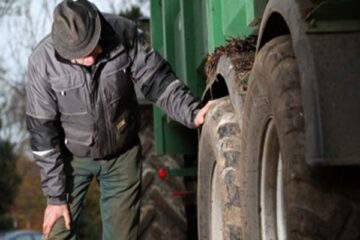Deaths due to Falls and Collapses 2008-2017 (18% of all fatalities)

The major points of concern, regarding working from a height, are falling or collapsing. Falling from a height is a common cause of accidents involving farm buildings. Falls can occur from using ladders, through fragile roofing materials collapsing underneath or from unprotected edges of roofs or other structures.
Fatal and serious accidents often happen when roofs are being quickly repaired. According to the HSA, a total of 18% of all deaths across the agricultural industry are directly due to falls or collapses, with over half of these deaths (57%) within this figure resulting from falling from a height.
Fragile roof sheeting and skylights are heavily linked with these type of deaths. Weathered skylights become indistinguishable from other roofing material. Both skylights and glass, when painted over, are not recognisable as such and are highly dangerous.
The number one rule before working from a height is assessing the risks in order to prevent falls and fatalities. A farmer should avoid heights where possible, however, there are times when a farmer will be required to carry out work from a height. In this scenario, the HSA provides a risk assessment checklist which must be carried out before partaking in such activity.
|
|



